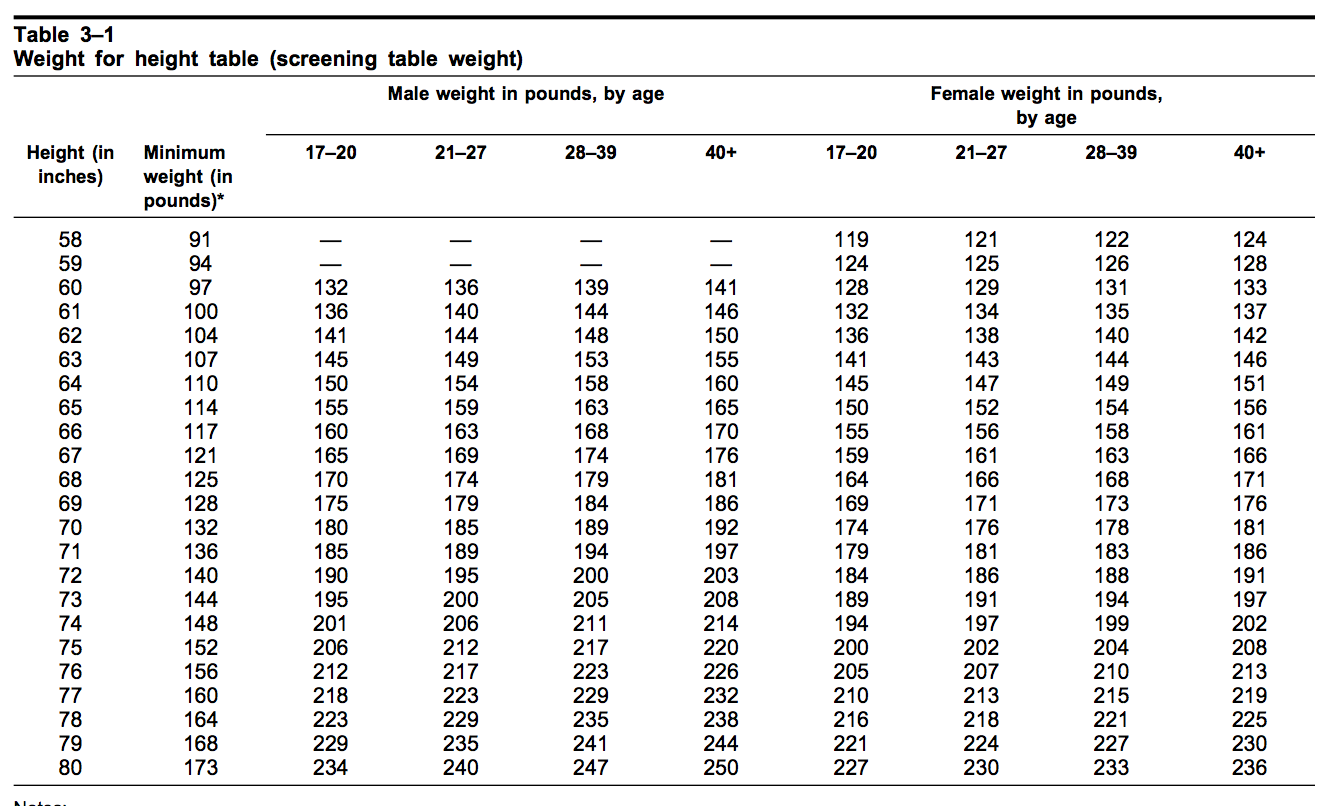The army height weight chart is a crucial guideline used by military organizations to assess the physical eligibility of potential recruits. These standards ensure that all personnel meet the necessary health and fitness levels required to perform demanding tasks in various environments. The chart not only aids in evaluating a candidate’s body mass index (BMI) but also plays a significant role in creating a disciplined and physically capable army. This article delves into the specifics of the army height weight chart, explaining how it works and why it is essential for aspiring soldiers.
Maintaining an appropriate weight relative to height is vital for military personnel. The army height weight chart is designed to promote overall health and ensure that recruits can endure rigorous training and operational duties. By adhering to these guidelines, the military can cultivate a force that is not only strong but also agile and resilient. In this article, we will explore various aspects of the army height weight chart, including its significance, how it is applied, and what potential recruits should know before enlisting.
As we navigate through the details of the army height weight chart, we will address common questions and concerns regarding recruitment standards. Understanding these criteria can help prospective soldiers prepare for their military journey and ensure they meet the physical requirements set forth by the armed forces. So, let's dive in and uncover everything there is to know about the army height weight chart.
What is the Army Height Weight Chart?
The army height weight chart is a physical fitness guideline used by the military to determine whether a recruit meets the necessary height and weight standards. This chart is divided by age and gender and provides a range of acceptable weights for various heights. The primary purpose of the chart is to ensure that enlisted personnel are fit enough to handle the rigors of military life.
How is the Army Height Weight Chart Used?
Recruiters and medical personnel utilize the army height weight chart during the enlistment process. When a potential recruit arrives for processing, they are measured and weighed to determine if they fall within the acceptable ranges set by the chart. If a recruit does not meet these standards, they may be given guidance on how to achieve the necessary weight before reapplying.
What Are the Consequences of Not Meeting the Chart Standards?
Failing to meet the height weight requirements can result in disqualification from service. However, individuals who fall short may have options to improve their fitness and return for reassessment. This process encourages recruits to invest in their health and well-being, fostering a culture of fitness within the military.
Is There a Difference Between Male and Female Standards?
Yes, the army height weight chart has different standards for males and females. The military recognizes physiological differences and adjusts the acceptable weight ranges accordingly. This differentiation ensures fairness and encourages both genders to meet the physical fitness expectations of their respective roles.
How Does the Army Determine Acceptable Weight Ranges?
The acceptable weight ranges on the army height weight chart are derived from extensive research on health and physical performance. The military aims to strike a balance between maintaining a diverse force and ensuring that personnel are physically capable of performing their duties effectively.
Can Recruits Use Body Fat Measurements?
In some cases, body fat measurements can be used as an alternative to height weight standards. If a recruit exceeds the weight limit but passes the body fat assessment, they may still be eligible for enlistment. This approach allows for a more comprehensive evaluation of an individual's physical fitness.
What Should Potential Recruits Know About the Army Height Weight Chart?
Potential recruits should familiarize themselves with the army height weight chart and assess their physical readiness before applying. Here are some key points to consider:
- Understand your height and weight measurements in relation to the chart.
- Engage in regular physical activity to maintain a healthy weight.
- Consider consulting a fitness professional for guidance on achieving your desired weight.
- Stay informed about any updates to the army height weight chart, as standards may evolve.
What Resources Are Available for Aspiring Soldiers?
Aspiring soldiers can access various resources to help them prepare for military service. These include fitness training programs, nutrition counseling, and mentorship from current or former military personnel. Utilizing these resources can significantly enhance a recruit's chances of meeting the army height weight chart standards.
How Can I Prepare for the Recruitment Process?
Preparation for the recruitment process involves both physical and mental readiness. Here are some essential steps to take:
- Establish a workout routine that focuses on strength, endurance, and flexibility.
- Adopt a balanced diet that supports your fitness goals.
- Practice self-discipline and commitment to your training regimen.
- Stay motivated by setting short-term and long-term fitness goals.
Conclusion: Embrace the Standards for a Successful Military Career
In conclusion, the army height weight chart serves as an essential tool for maintaining a fit and capable military force. By adhering to these standards, potential recruits can enhance their physical readiness and increase their chances of a successful enlistment. Understanding the significance of the army height weight chart and preparing accordingly will ensure that aspiring soldiers embark on their military journey with confidence and determination.
Unraveling The Jamaican Slang For Friend Or Bro Brainrot
Discovering The Lives Of Jessica Kirson's Daughters
Exploring The World Of Michael B. Jordan's Kids: A Glimpse Into Family Life


